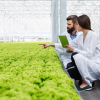Do you know how common it is to be not able to log in to a website? Well, if you know, you wouldn’t worry at all when the site locks you out.
There could be many problems that become a reason for such an issue.
The good part is? Most of these have common fixes, so stay here as we walk you through the easiest guide on how to regain access to a website If you cannot log in to a website, there can be hundreds of reasons which can be the reasons.
But that is not all. Even due to some technical faults, the viewers can not access the websites.
6 Common Reasons For Which You Cannot Log In
Even sometimes you have queries like why can’t I log in to Facebook on my phone or desktop. This is a common scenario.
But when you are facing the problem the first time, you will be scared. Hence the first thing which comes to our mind is accounts are being hacked.
But only hacking might be the cause of this problem. Then what are the reasons for which you cannot log in?
1. First Of All, Check Your Internet Connection
When I first realized that internet issues could be the cause of can’t log in error, I was trying to sign in at Cash App and it wasn’t working. After trying all the possible fixes, I figured out that a faulty internet connection was getting in the way.
Typically, it helps to load a google page and see if the results come up. That would indicate how smoothly your internet network is working.
2. You May Be Using An Incorrect Username
Login credentials are obviously important, and a website may not be giving you access because you are trying to log in using the wrong username. You may have made a mistake, put in the wrong character, missed an alphabet, etc.
The website needs an exact username to let you pass, and therefore, it won’t work unless you provide the right information. And you will see the can’t log-in signs flashing in front of you.
3. Too Many Attempts Can Log You Out
If you put in a wrong password or a username, you will be prompted to try again. However, after 3 to 4 wrong inputs, the website may lock you out for security reasons.
This is to help prevent a hacker from repetitively trying to log in without valid information. But these security issues sometimes become the cause of can’t login errors.
4. Violation Of Site Policies Can Have You Suspended
Some websites have more strict policies and terms of use, especially the ones set by the government, such as myhealthplan account, etc.
When a user violates any of the rules and regulations, they may be suspended temporarily or permanently from accessing the account due to the can’t log in error.
Some websites do not tell you the policy that you have violated, whereas others will warn you once or twice before banning your account.
5. The Website May Just be Down For Maintenance
Websites are maintained online and have complicated operations at the back end. They are frequently taken down for maintenance.
So, when you are trying to log in, and the website is undergoing maintenance work, there are solid chances that you will not be able to get access.
This cannot log in issue is less common with big websites. There are also a few others that actively inform their visitors that the website is not available for the time being.
6. Incorrect Password
Can’t you log in to any website? The first culprit may be internet connectivity. Then the second one can insert the incorrect password.
Yes, this is a very common error. You are recording a separator password. But during the login, you are given another password.
As a result, the website does not let you access your account or website. How to recover it? This is very simple: always use the recovery protocol to recover the account details when you can not log in to your website.
A Simple Hack Before You Go!
Although enabling cookies or checking that Java is enabled works for fixing some glitches in the website and login issues, there is one tried and tested method that never disappoints: Try clearing your cache and cookies!
If Facebook is hacked cannot log in to the account. Then the cookies are sometimes the main culprits. Hackers can easily track the locations of the devices with the cookies, and hacking is easy when your locations are easily findable.
This is something that even the can’t log in due to customer support services often suggest when you are not able to access a website or online account.
Or when only a portion of the website is available. This may be due to technical reasons. Once you clear the cookies and the cache, anything that is messing up the website will be automatically cleared, and you will have a blank slate to work with.
Read Also:

























